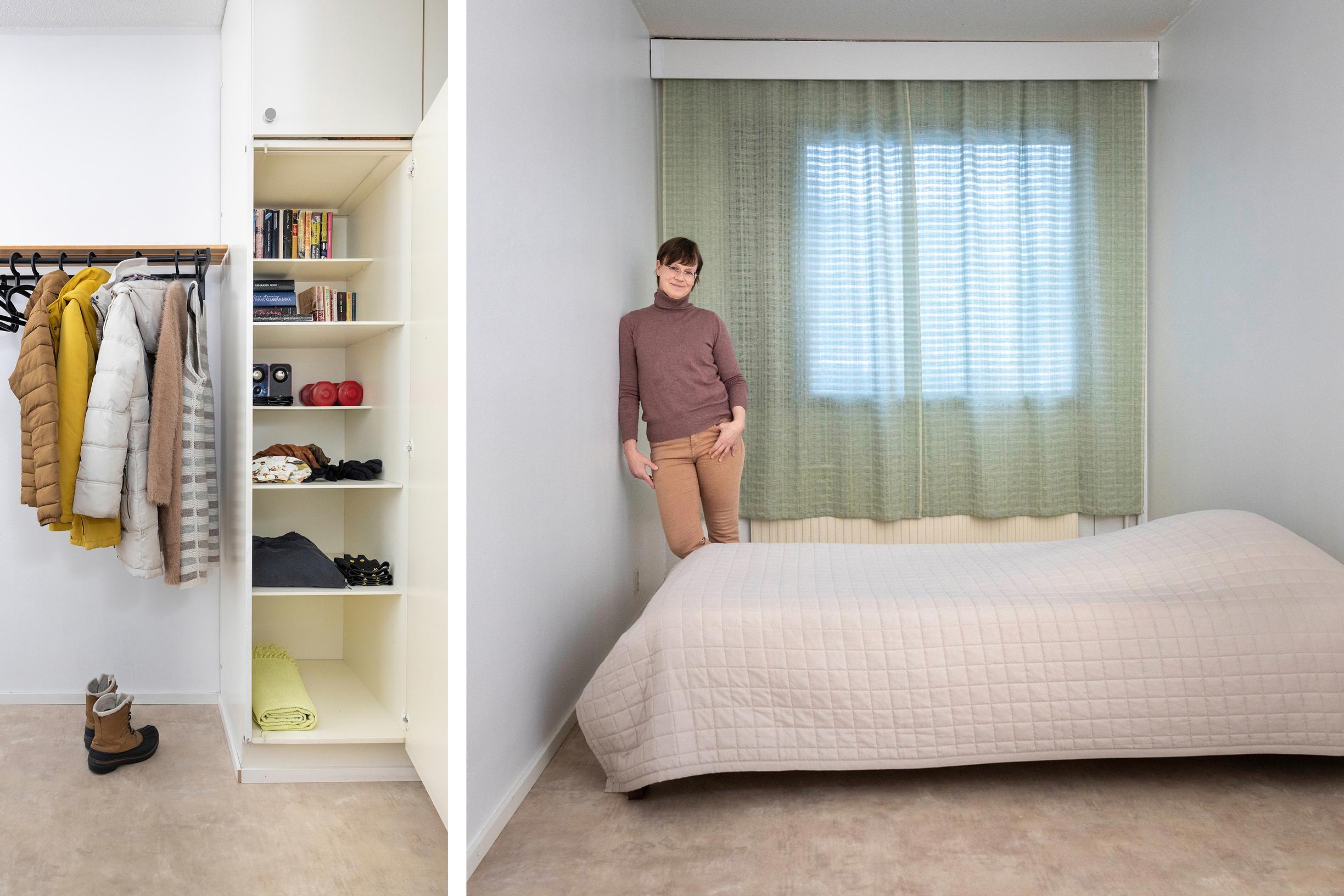
“Only 550 items left in my home”: Sari parted with thousands of items
For twelve years, Finnish Sari Pöyliö has been clearing out her home of anything unnecessary. She says it’s made her everyday life easy—and pleasantly lazy.
It felt like something suddenly clicked, Sari Pöyliö, 57, says.
I was looking around my living room one autumn, about 12 years ago, when I realized my two-room place was stuffed with furniture: dressers, chests of drawers, a corner cabinet, tables… If more than one guest stopped by, moving around was difficult. I pictured an empty, white home instead.
That was how my journey toward a minimalist home began.
Whose home?
Residents: Author Sari Pöyliö, 57, and Topi, her 11-year-old Karelian bear dog.
Home: A two-room apartment in a 1980s building in downtown Kemijärvi.
Square meters: 50 m².
Housing costs: The monthly rent of 522 euros includes flat-rate electricity and water.
In the beginning, Sari’s home had at least 10,000 items. Now it’s down to 550. On average, a Finnish home is said to contain tens of thousands of objects.
In Sari’s place alone, dishware makes up about 100 items, while her clothing adds up to just under 50.
“Yes, I do have too many dishes—enough to set the table for eight. But it would feel strange to make guests eat in shifts.”
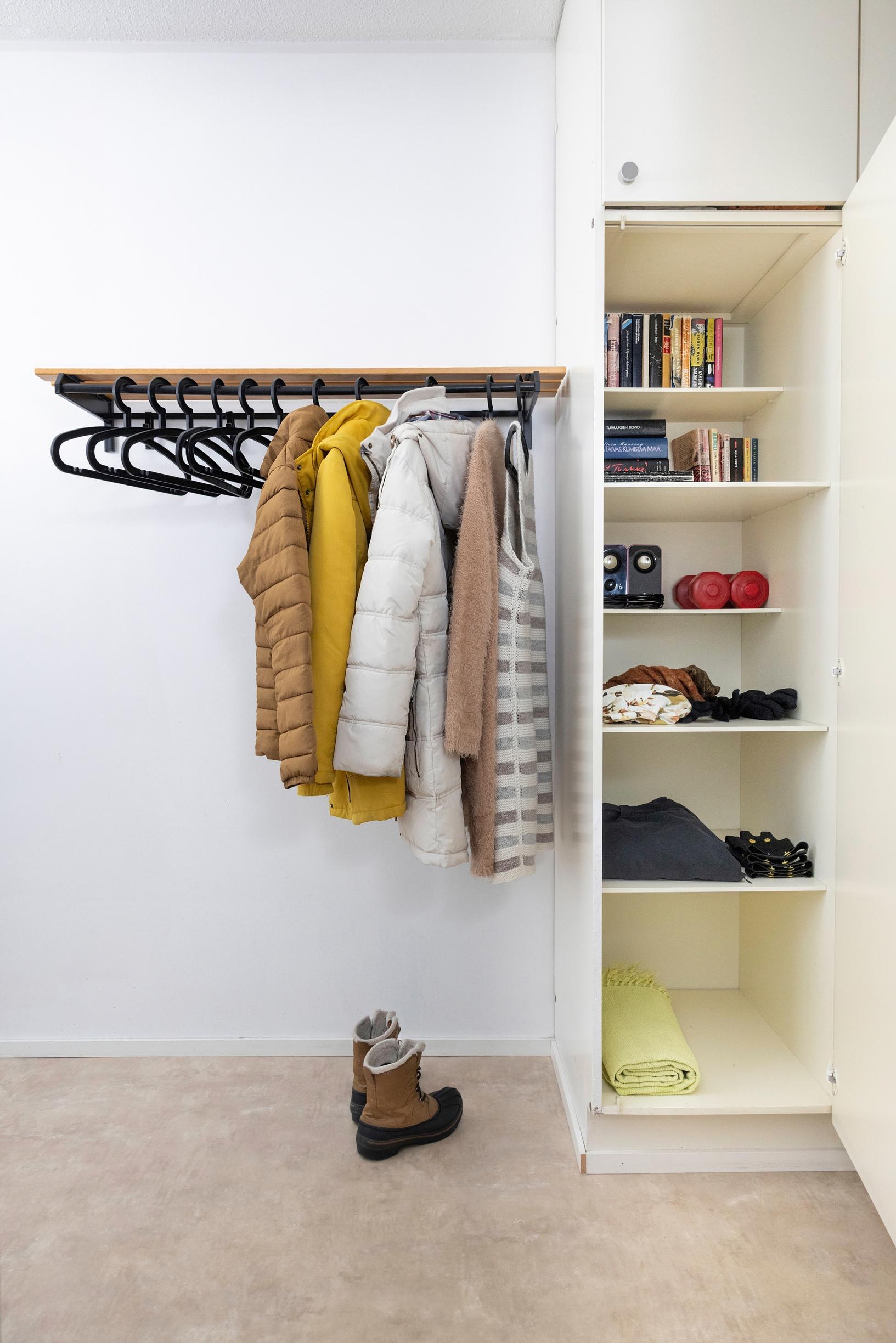
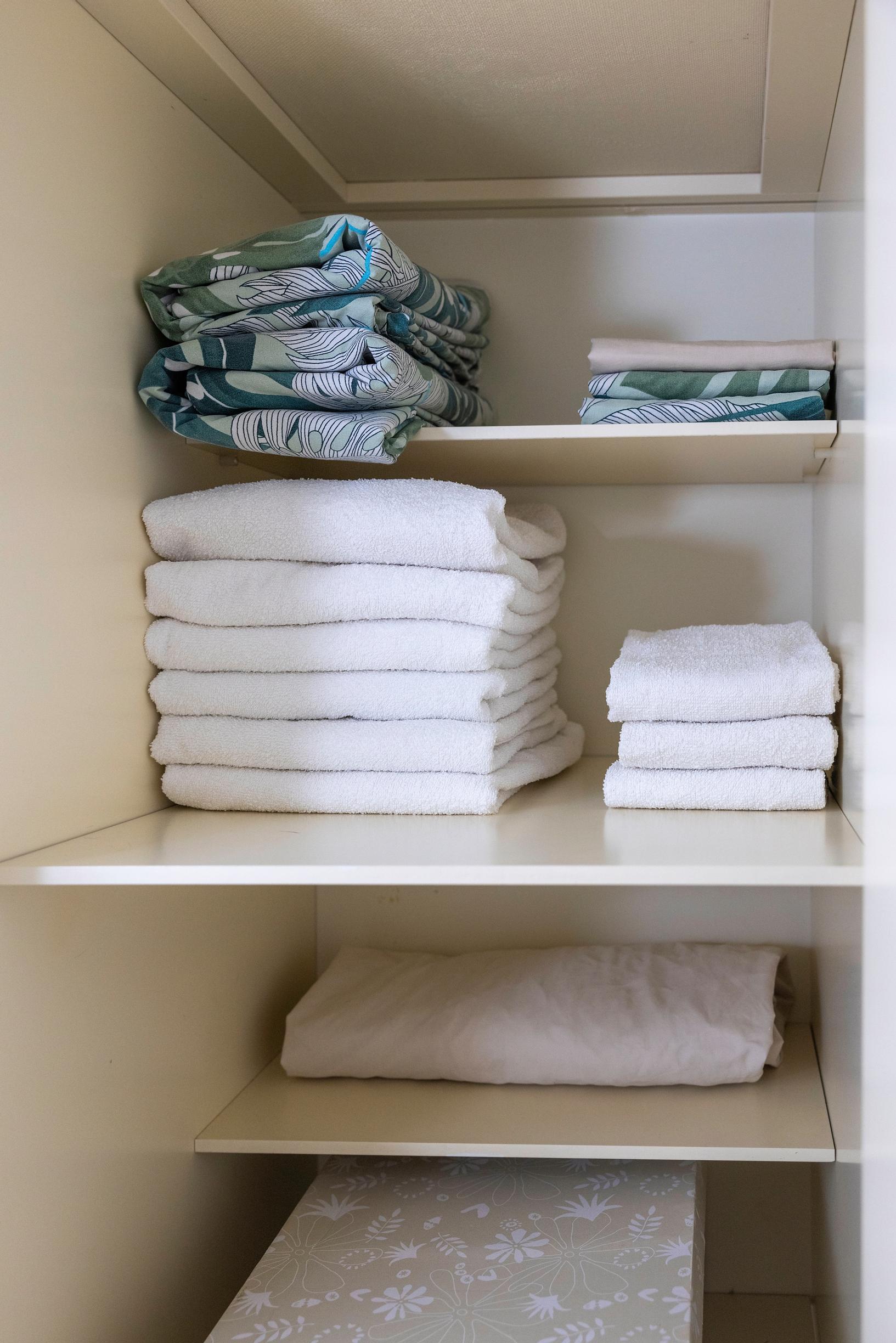
The cupboards almost echo with emptiness. One shelf holds a couple of towels, another has a bed sheet and two duvet covers. In the wardrobe, five identical blouses hang neatly in a row.
The bedroom décor includes a carefully made single bed and curtains that filter the light beautifully. There’s not even a ceiling lamp because Sari only sleeps there. The pared-down space pleases her eye.
“Yes, I do have too many dishes—enough to set the table for eight. But it would feel strange to make guests eat in shifts.”
The living room has the most stuff: a TV on its stand, a sofa set, a small coffee table, a rug, a side table for a lamp, and a dog bed.
Sari blames the pileup partly on 11-year-old Topi. The armchairs and dog bed are especially for him.
“When Topi is gone, there’ll be even fewer items,” Sari says.
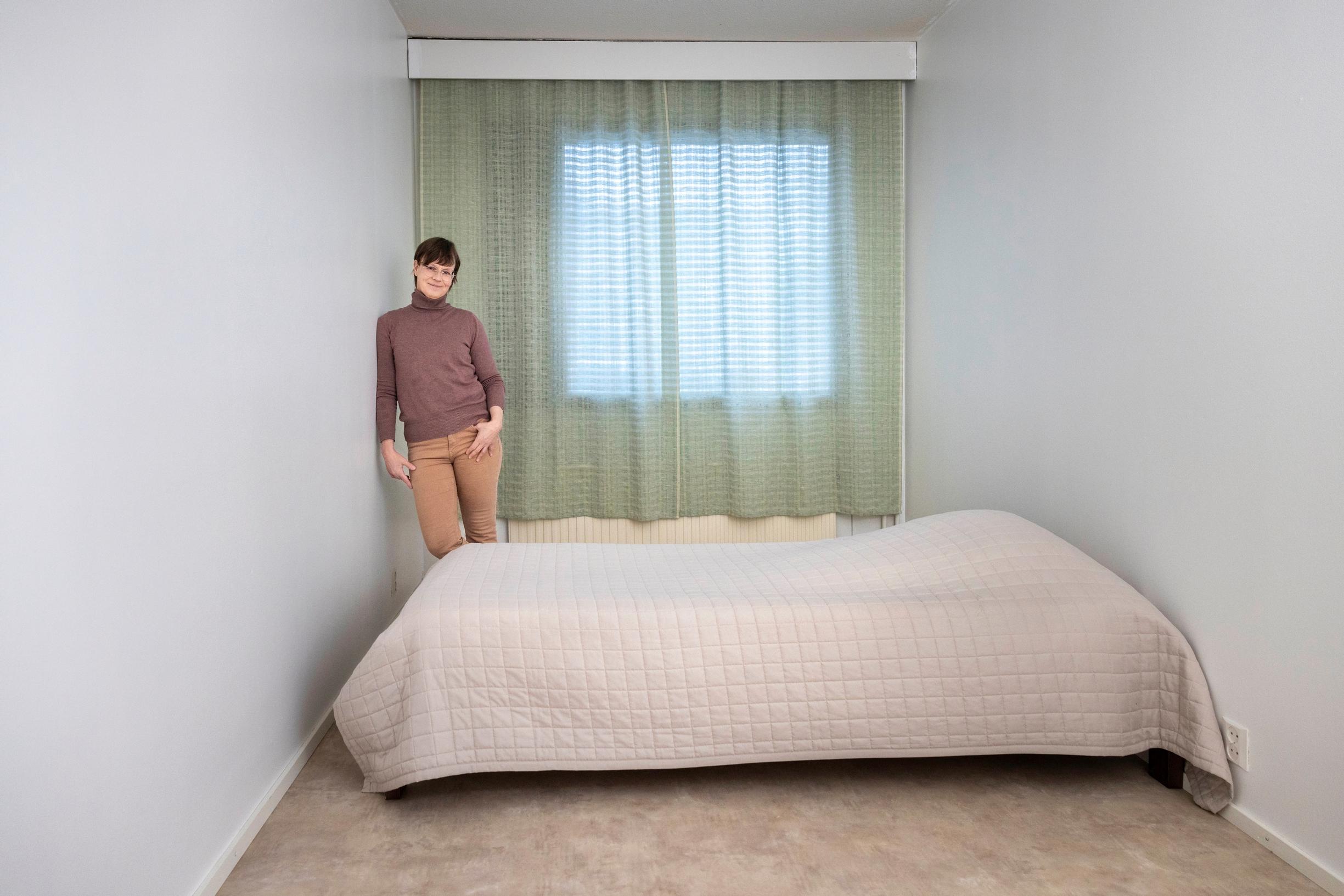
Selling used items is like a job
When Sari began downsizing in 2011, Japanese organizing consultant Marie Kondo’s KonMari wasn’t yet a buzzword in Finland. Sari says she simply followed her gut, with no set plan.
First went the furniture. Then she tackled her cupboards, one by one.
“While going through my cupboards, I realized I had plenty of things I no longer needed—items that were useful once but not anymore after my two kids moved out. I don’t even remember everything I gave away, because none of it mattered to me anymore,” Sari says.
During the first two years, she hauled 17 trash bags’ worth of things out to the garbage, recycling, or to be donated. Sari hasn’t tried making money off her belongings.
“Selling used goods is basically work. I don’t fret about the money I might lose by giving something away. By the time I decide it’s not for me, I’ve already come to terms with it. I just want it gone for someone else to appreciate.”
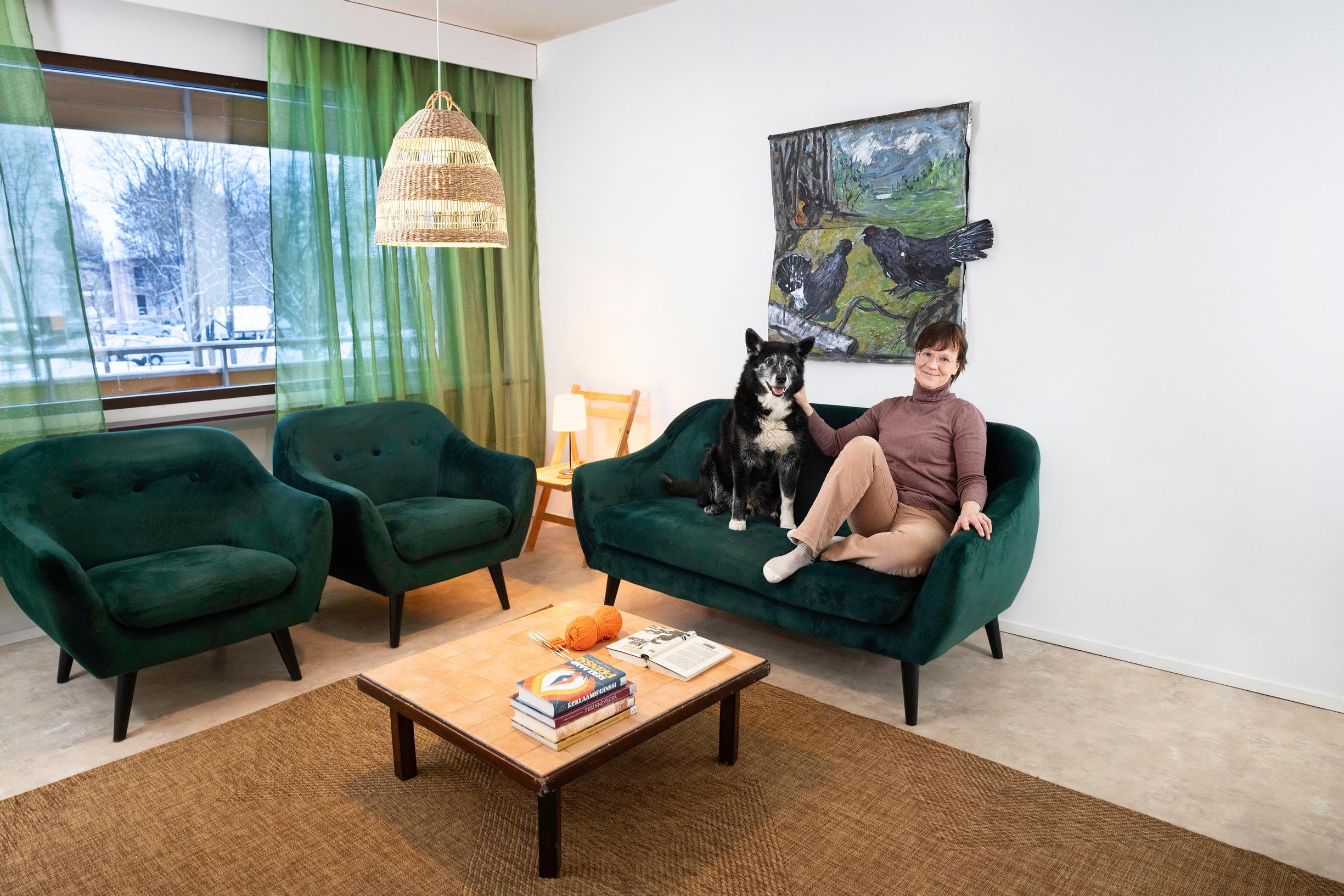
Leaving things unpurchased is, in Sari’s view, a more effective way to save than selling used items.
She says that it’s easy to give away anything you don’t need, especially through Facebook’s recycling groups.
Parting with material things has never been painful—it’s felt more like a relief. That’s because Sari only removes stuff she genuinely wants to lose. Minimizing her belongings isn’t the main point.
She also leaves a window for second thoughts. She doesn’t discard items straight away; instead, she places them in a storage unit for a few weeks. If she needs or misses something during that period, it’s not ready to go. That happened, for example, with her ironing board and iron.
Sari has been reducing her belongings up to the present day. Her most recent giveaway was a coffee maker that lingered in a cupboard just for visitors.
Precious, memory-loaded items are kept in boxes in storage. These contain small objects and papers collected over time, like notes she exchanged with her mother and children.
“They’re worthless to anyone else, but they mean a great deal to me.”
Now and then, something new appears even if she doesn’t buy it herself. A guest might kindly drop off a souvenir that ends up being unnecessary.
Sari insists these unneeded gifts don’t bother her. A gift shows the giver wanted to make her happy. Before long, though, the item usually heads off to someone else.
Sari herself rarely gives presents. When she does, it’s always something useful she knows the person needs. She once gave her son five matching blue-checked shirts at once.
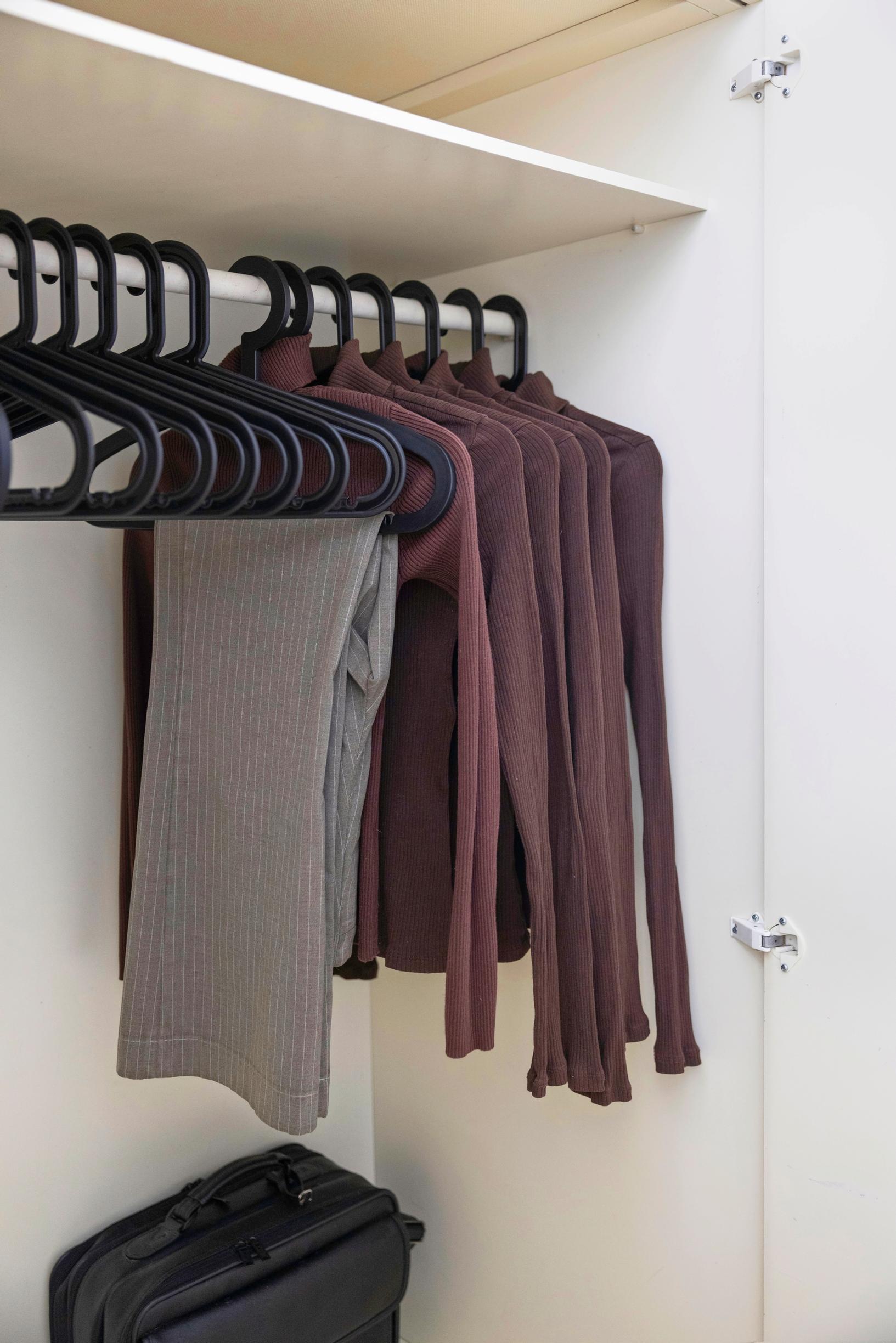
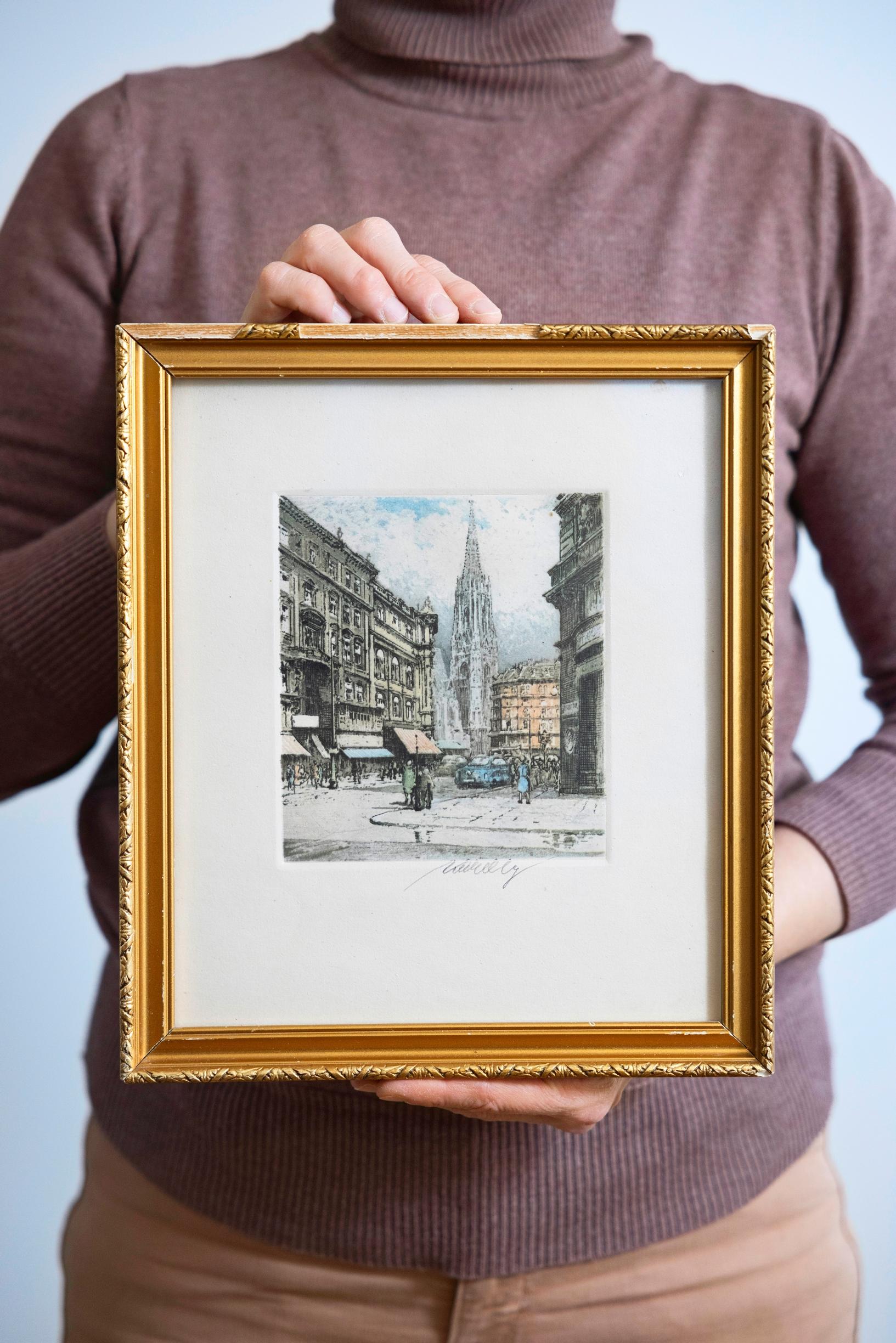
Effortless minimalism suits the lazy
Sari sees her lifestyle as an example of making living effortless through minimalism, as introduced in Finnish Teemu Kunto’s book on the topic.
“To me, life is comfortable and simple when your home is in order. You keep what you need but discard the rest,” Sari explains.
“Things require a lot of upkeep. You have to look after them, move them, clean them. I just don’t want to fuss with all that.”
Fewer possessions mean less cleaning. Everything has its place, so you find it quickly. And in the morning, choosing what to wear is easy when you only have one choice for each activity.
In a minimalist home you see any mess or flaw right away. A knitting project on the coffee table stands out in a nearly bare space, whereas a single dirty cup in a cluttered place doesn’t grab attention.
When you notice a mess, you fix it immediately. If a cupboard handle comes loose, you grab your screwdriver, handle it, and move on.
“The to-do list never gets out of hand. It suits a lazy person like me,” Sari says, laughing.
Empty kitchen counters and neatly folded linens might not scream laziness, but it’s how Sari sees herself.
“Having fewer, simpler things leaves room for laziness and a comfy life. You just don’t have as much work.”
Still, Sari warns that minimalism can go too far. If you have to do the dishes right after every meal and pick up every crumb, it can get stressful.
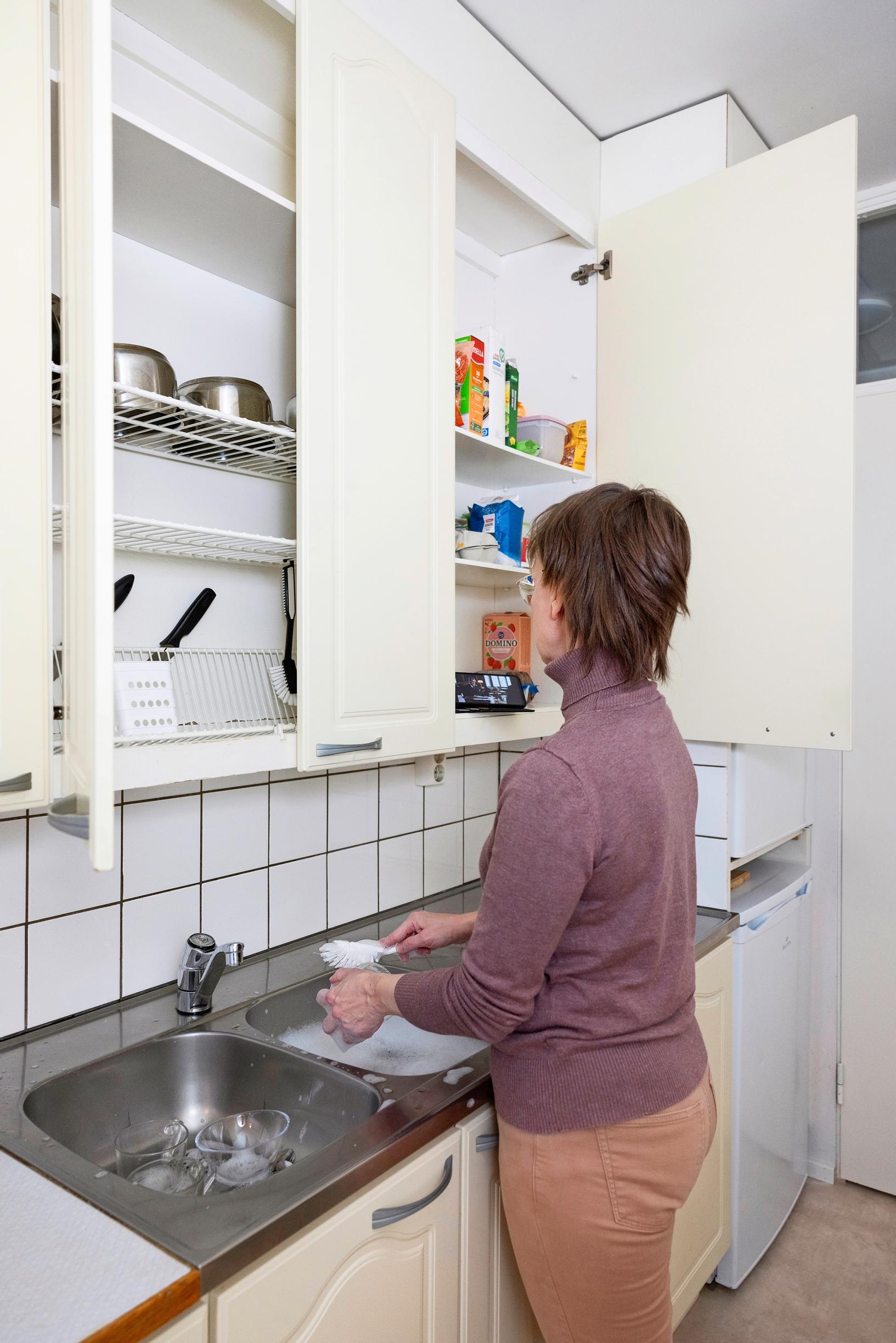
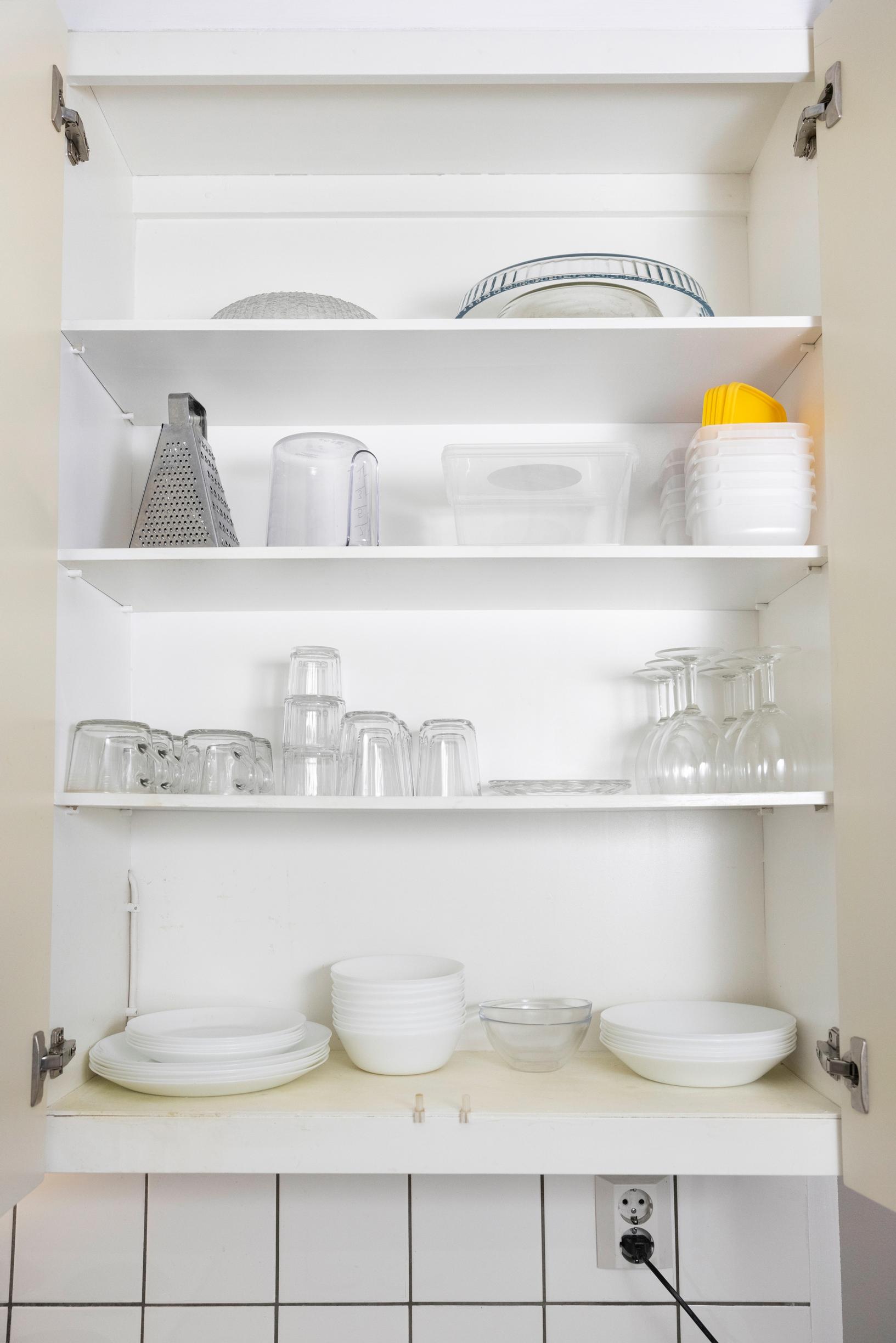
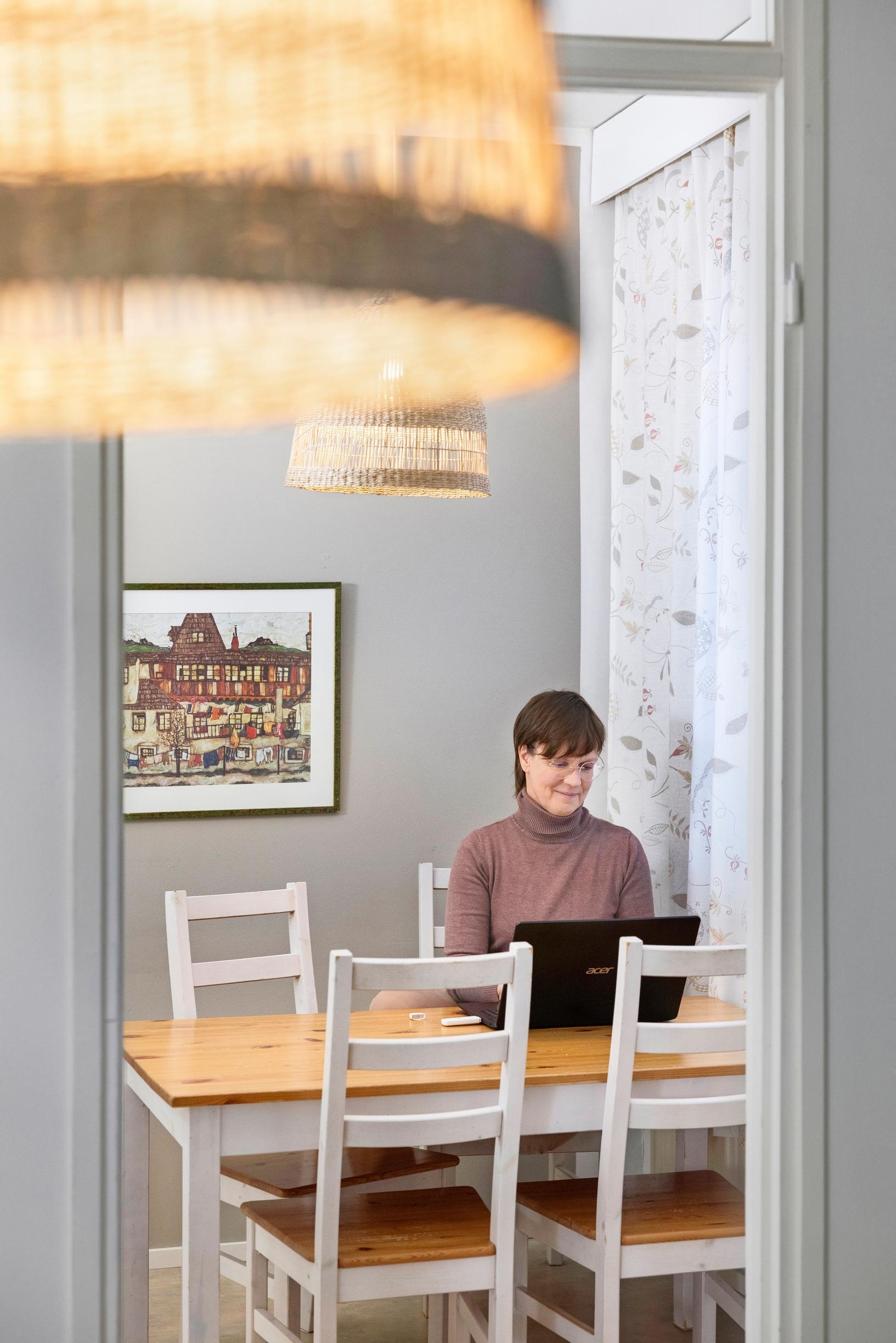
Must have enough square meters
In one sense, Sari isn’t a minimalist: she needs space and openness. Right now, she and Topi share a 50-square-meter two-room apartment.
Last year, she briefly tried living in just over 20 square meters in downtown Jyväskylä, near her daughter’s family.
“It really wasn’t for me. In that single room, if I took two steps, I’d bump into something. And walking the dog among city crowds was tough. It was better to come back home.”
“Having fewer possessions makes life lazy and comfortable. There’s simply much less work.”
In her current home, Sari loves the sense of space and the calm atmosphere. On weekdays, she appreciates how smoothly she can work. Taking a seat on the left side of her kitchen table, she writes her next book, word by word.
In the evenings, after a walk and a late meal, she showers and slips into her one and only lounge outfit: gray plaid flannel pants and an old brown sweater. In the living room, she clicks on a terracotta-toned lamp, reads, does yoga, pets the dog in its bed, or watches TV until she drifts off.
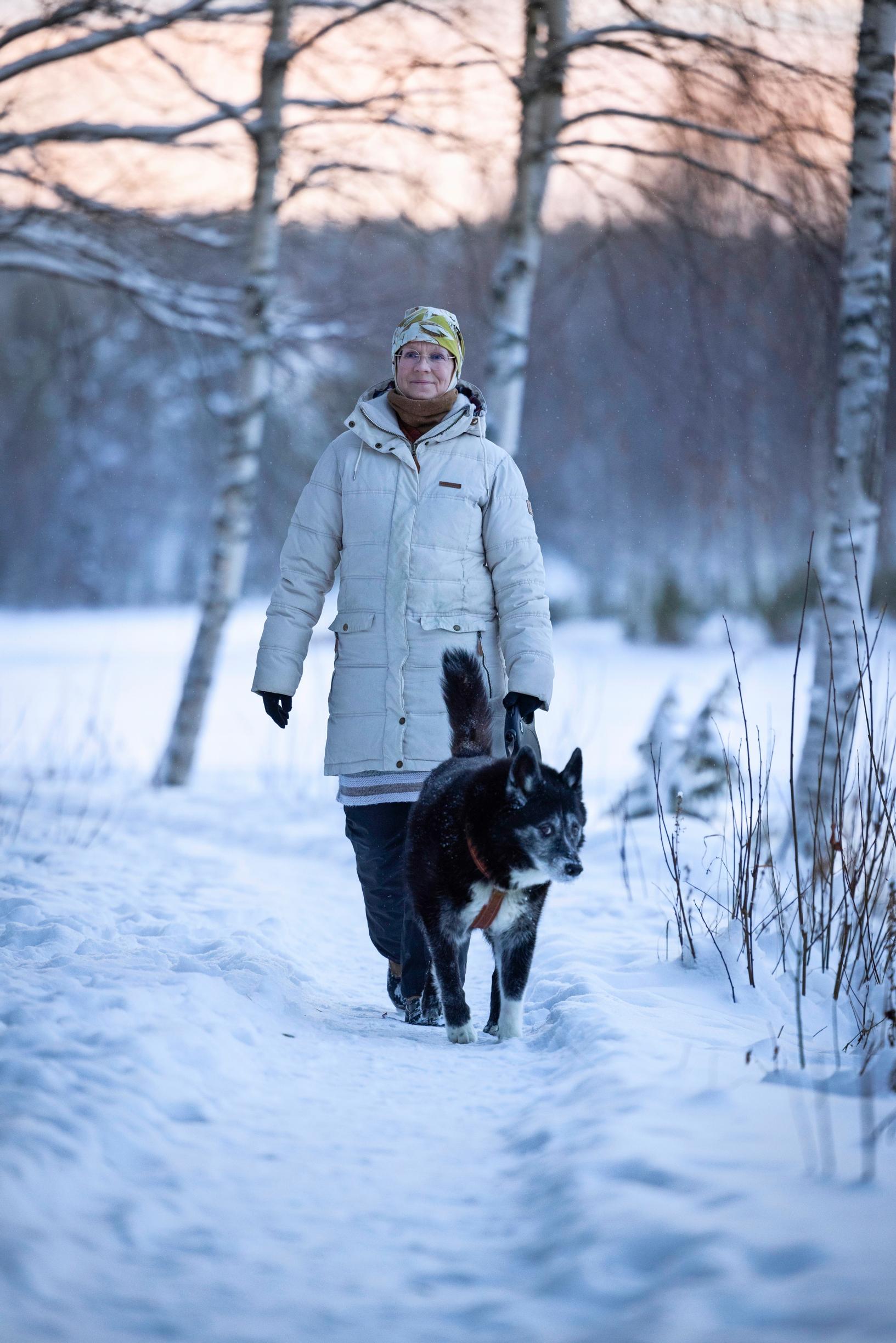
“I don’t wash my windows even every three years”
Where do you eat at home?
At the kitchen table while reading. At the moment, I’m reading a book by Kalle Päätalo.
Where do piles accumulate in your home?
Even after fighting it for years, there are still piles in the storage unit. Stuff seems to multiply all by itself in there.
How often do you clean?
I vacuum two or three times a week because of dog hair. During summer I wash the floors weekly, in winter once a month.
Are you a morning person or a night owl?
I’m somewhere in between. I go to bed around 10–11 p.m. when I feel tired, and I wake up at 7–8 a.m. without an alarm.
A movie or TV series you’re following?
Poromafia is a quirky Finnish series set in Lapland.
Which household item would you never give up?
My TV. I never learned to watch streaming services unless I’m washing dishes.
Which household chore do you like the least?
Washing windows. It’s really tedious, and apparently I do it wrong, because I end up soaking both the floor and myself. I don’t do it every three years. Since this apartment faces north, the sun only hits my windows on summer nights, so the dust isn’t that noticeable.
And which chore do you enjoy the most?
Washing dishes by hand. I watch Downton Abbey or Frasier, and I hardly notice I’m washing up.
What would you change about your home?
I’d widen the hallway and knock down the walls between the bedroom and living room, but since I’m renting, I can’t exactly go at it with a crowbar.
What’s happening at home between 7 and 8 p.m.?
A solid round of petting and praise for the dog before it goes to bed.
And what about mornings between 7 and 9?
I brush my teeth, drink green tea, and check the news on my phone. Around eight or nine, I take the dog for an hour-long walk by the Kemijoki river. On weekdays, I start work at ten.
What’s your next home purchase?
New linens. They’re tough to buy, because I never find designs I like. I’d love those 1960s–70s retro prints back on the market—for both linens and dishes!


